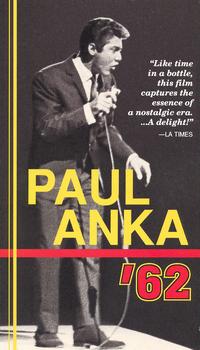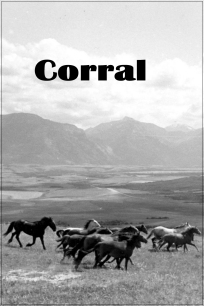Roman Kroitor was a Canadian filmmaker who was known as a pioneer of Cinéma vérité, as the co-founder of IMAX, and as the creator of the Sandde hand-drawn stereoscopic 3D animation system. He was also the original inspiration for The Force. His prodigious output garnered numerous awards, including two BAFTA Awards, three Cannes Film Festival awards, and two Oscar nominations.
Colin Archibald Low was a Canadian animation and documentary filmmaker with the National Film Board of Canada (NFB). He was known as a pioneer, one of Canada's most important filmmakers, and was regularly referred to as "the gentleman genius". His numerous honors include five BAFTA awards, eight Cannes Film Festival awards, and six Academy Award nominations.

Lonely Boy is a 1962 Canadian cinéma vérité documentary about the former teen singer Paul Anka. The film takes its name from Anka's hit song, "Lonely Boy", which he performs to screaming fans in the film. This short documentary makes use of hand-held cameras to record intimate backstage moments. It was produced by the National Film Board of Canada and directed by Roman Kroitor and Wolf Koenig.
Eldon Davis Rathburn was a Canadian film composer who scored over 250 films during his thirty-year tenure as a staff composer at the National Film Board of Canada. Known as "the dean of Canadian film composers", Rathburn composed music for documentaries, short films, as well as such feature films as Drylanders (1963), Nobody Waved Good-bye (1964), Waiting for Caroline (1969), Cold Journey (1975), and Who Has Seen the Wind (1977). Rathburn was the subject of a 1995 NFB documentary by Louis Hone titled Eldon Rathburn: They Shoot... He Scores.

The Romance of Transportation in Canada is a 1952 animated short film made by the National Film Board of Canada. Part of the postwar Canada Carries On series, it offers a humorous account of the history of transportation in Canada. The film was directed by Colin Low and produced by Tom Daly.
Joseph Bernard Devlin was a French-Canadian film director, producer, and writer who played an important role in the development of French-language film production at the National Film Board of Canada (NFB).
Circle of the Sun is a 1960 short documentary film on Kainai Nation, or Blood Tribe, of Southern Alberta, which captured their Sun Dance ritual on film for the first time. Tribal leaders, who worried the traditional ceremony might be dying out, had permitted filming as a visual record.
Wolf Koenig was a Canadian film director, producer, animator, cinematographer, and a pioneer in Direct Cinema at the National Film Board of Canada.

Thomas Cullen Daly was a Canadian film producer, film editor and film director, who was the head of Studio B at the National Film Board of Canada (NFB).
John Spotton C.S.C. was a Canadian filmmaker with the National Film Board of Canada.

Pincers on Japan(Piège à Nippon)is a 19-minute 1943 Canadian documentary film, made by the National Film Board of Canada (NFB). The film was directed by James Beveridge, who also produced and directed a similar NFB documentary, Look to the North (1944). Its companion film, Road to Tokyo, was produced in 1942.
Robert Verrall is a Canadian animator, director and film producer who worked for the National Film Board of Canada (NFB) from 1945 to 1987. Over the course of his career, his films garnered a BAFTA Award, prizes at the Cannes Film Festival and Venice Film Festival, and six Academy Award nominations.
Stanley Jackson (1914–1981) was a Canadian film director, producer, writer and narrator with the National Film Board of Canada (NFB).
Julian Biggs (1920–1972) was a director and producer with the National Film Board of Canada and its first Director of English Production. Over the course of his 20-year career, he created 146 films, two of which were nominated for Academy Awards. His film 23 Skidoo (1964) received two BAFTA nominations, including the BAFTA United Nations award.
The 25th Canadian Film Awards were announced on October 12, 1973, to honour achievements in Canadian film.
The 23rd Canadian Film Awards were held on October 1, 1971 to honour achievements in Canadian film. The ceremony, which had been returned to banquet format, was hosted by actor Leslie Nielsen and broadcaster Charlotte Gobeil.
The 22nd Canadian Film Awards were held on October 3, 1970 to honour achievements in Canadian film. The ceremony was hosted by broadcaster Bill Walker.
The 15th Canadian Film Awards were held on May 10, 1963 to honour achievements in Canadian film.
The 7th Canadian Film Awards were announced in 1955 to honour achievements in Canadian film.
Malca Gillson (1926-2010) was a Canadian filmmaker with the National Film Board of Canada, and one of the first women to join the NFB in a non-junior position. She was a multi-tasker, acting as composer, sound editor, editor, producer and director. She is best known for her ground-breaking trilogy about end-of-life care: The Last Days of Living, Reflections on Suffering and Time for Caring.




